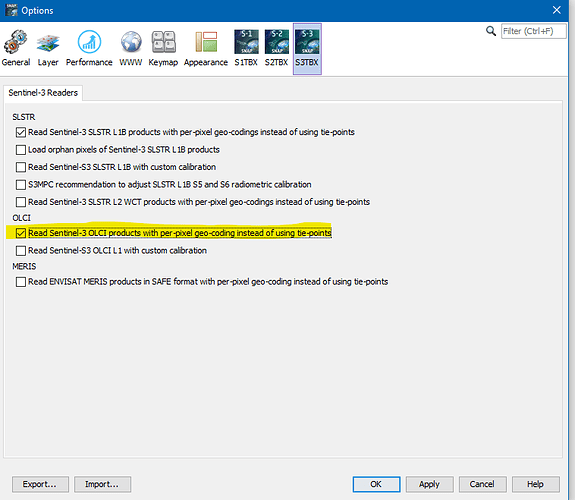hello Chui,
The first thing you can try is to set the property s3tbx.reader.olci.pixelGeoCoding.
Either by setting the property in a text file, as described here:
Or in the GUI (Tools / Options):
This will improve the geo-coding if you still use the tie-points as basis.
Next version of SNAP/S3TBX will have this setting as default.
If this is still not sufficient. you can set ground control points (GCPs) in the scenes for known locations.
Afterwards you can create a new geo-coding based on these GCPs.
It is like the QGIS georeferencer.
.

